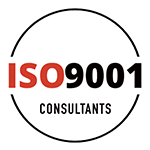Improving how employees perform is essential for every business. ISO 9001 offers a clear way to enhance performance by aligning team efforts with quality goals. This standard doesn’t just focus on getting products right; it also plays a big role in motivating employees, making sure everyone is working toward the same targets.
ISO 9001 provides a structure that connects employee roles with the organisation’s quality goals. This connection builds a sense of purpose and clarity, driving motivation and involvement. Moreover, by setting clear objectives, management and teams can focus on what matters most. This focus leads to a more efficient, engaged workforce.
Using ISO 9001 helps employees grow their skills through targeted training and development. It fosters an environment where open communication and teamwork thrive. This systematic approach supports staff to work better together, enhancing overall productivity and quality outcomes. Embracing ISO 9001 means creating a workplace where continuous improvement becomes the norm, and excellence is a shared achievement.
Understanding ISO 9001 and Employee Engagement
ISO 9001 is more than just a set of standards; it serves as a powerful tool to boost employee motivation and involvement. The principles of ISO 9001 focus on quality and continuous improvement, which can drive employees to take more ownership of their roles. By setting a clear framework, employees understand what’s expected, leading to increased motivation as they see how their work contributes to bigger organisational goals.
To maintain high engagement levels, it’s vital to align team objectives with these quality standards. This alignment ensures that everyone is moving in a coordinated direction. When employees know that their efforts matter and contribute to the success of quality initiatives, they feel more valued. This sense of value leads to higher job satisfaction and encourages a positive work culture.
ISO 9001’s focus on customer satisfaction urges employees to engage more fully with their work tasks. Employees who understand the impact of their actions on customer outcomes are more likely to put in the effort needed to improve quality. This involvement is crucial for maintaining ongoing improvements and sustaining a workforce that is both motivated and committed to excellence.
Implementing ISO 9001 for Skill Development
ISO 9001 is not just about meeting standards; it’s also a pathway for growing employee skills and competencies. Here are some methods to enhance skills under this framework:
– Standardised Training Programs: Develop structured training sessions focusing on the specific needs identified through ISO 9001. Ensure these programs address gaps in current skills and equip employees with new competencies.
– Workshops and Seminars: Organise regular workshops that introduce employees to the latest best practices and techniques related to quality management. Encourage participation and interaction to make learning engaging.
– Cross-Functional Teams: Form teams that bring together individuals from different departments. This fosters a learning environment where employees can gain insights from diverse perspectives and skill sets.
– Mentorship Opportunities: Pair less experienced staff with seasoned employees. This enhances knowledge transfer and helps in building a culture of continuous learning.
Training programs play a crucial role in meeting ISO 9001 requirements. They provide a foundation for employees to develop the necessary skills to meet quality objectives. Continuous learning under this standard does not just benefit the employees; it boosts the overall capability of the organisation. This enhancement leads to more effective problem-solving, innovation, and adherence to quality processes across the board.
Improving Communication and Collaboration
Open communication and effective collaboration are critical components of ISO 9001. By fostering a culture of transparency, organisations can ensure that employees feel comfortable sharing ideas and feedback. This openness not only enhances employee relations but also leads to improved quality outcomes.
Strategies to foster communication include:
– Regular Meetings: Organise frequent team meetings to discuss ongoing projects and address any issues. This keeps everyone on the same page and encourages input from all team members.
– Clear Documentation: Maintain clear records and documentation of procedures and policies. This ensures everyone understands expectations and processes, reducing misunderstandings.
– Feedback Channels: Establish formal channels for feedback, where employees can share their thoughts and suggestions anonymously if needed.
Improved communication boosts teamwork by ensuring everyone understands their roles and responsibilities. When employees collaborate effectively, they can tackle challenges more efficiently and come up with innovative solutions. This synergy not only enhances performance but also reinforces a unified approach to achieving quality standards.
Monitoring Performance and Encouraging Growth
ISO 9001 sets the stage for consistent performance monitoring, which is critical for assessing employee contributions. By using performance metrics, managers can evaluate how well employees meet quality objectives and identify areas for improvement.
Performance metrics might include:
– Quality Indicators: Measure the quality of output or services provided by employees to ensure standards are met consistently.
– Efficiency Metrics: Track the time taken to complete tasks and identify any bottlenecks in the process that might affect productivity.
– Customer Feedback: Incorporate customer feedback to gauge satisfaction with products or services, providing a direct measure of employee impact.
Encouraging growth involves using feedback constructively. Managers should provide regular performance reviews, highlighting strengths and areas for improvement. This feedback should be actionable, offering employees a clear path to development. By focusing on continuous improvement, employees are motivated to enhance their skills and strive for excellence. This proactive approach not only benefits individual employees but also contributes to the overall growth of the organisation.
Conclusion
ISO 9001 opens up numerous opportunities for enhancing employee performance through its structured approach to quality and continuous improvement. By focusing on employee engagement, skill development, communication, and performance monitoring, organisations can create a supportive environment where employees thrive. The emphasis on aligning objectives ensures that everyone contributes to the organisation’s success, fostering a culture of achievement and satisfaction.
For businesses aiming to leverage ISO 9001 to its full potential, partnering with experienced consultants can make a significant difference. Our team at ISO 9001 Consultants is equipped to guide you through the process, tailoring solutions that fit your unique needs. Experience professional development that aligns with quality standards and drives your business forward. Embrace the power of ISO 9001 to unlock your team’s true potential and secure a competitive edge in the market.








Users Comments
Get a
Quote